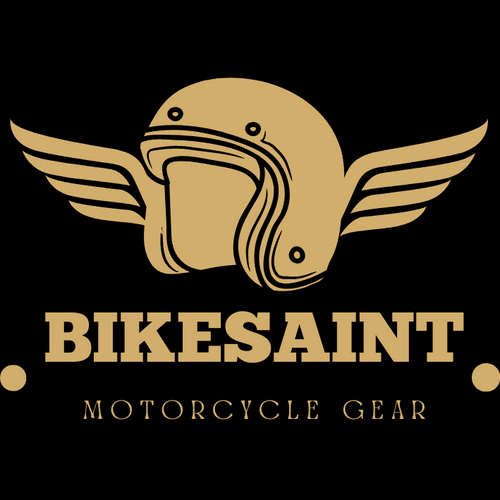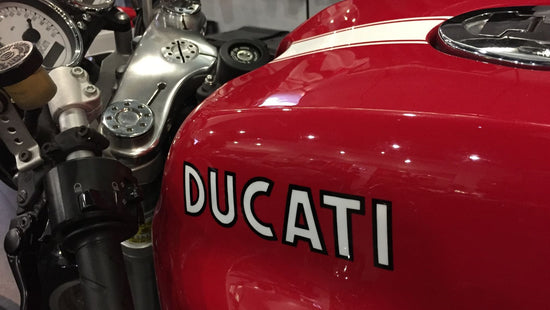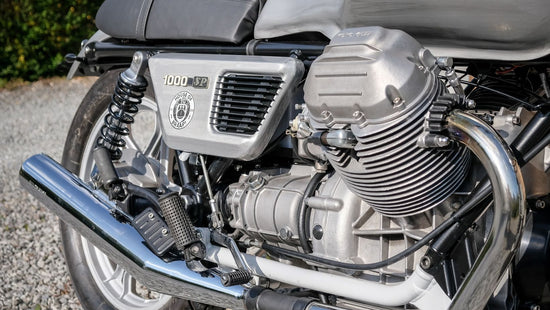

Honda motorcycles have a long and storied history, from their humble beginnings as a motor-assisted bicycle to the iconic Super Sports and Adventure motorcycles of today. From the earliest models to the most modern offerings, Honda has been a leader in the motorcycle industry for over 70 years. In this article, we’ll take a look back at the history of Honda motorcycles and explore how the company has evolved over the years.
Honda's Introduction to the Motorcycle World
Soichiro Honda was the founder of the Honda Motor Company, and the man responsible for bringing Honda motorcycles to the world. The son of a blacksmith and factory worker, Honda had a passion for engineering from an early age. After studying auto mechanics at the Tokyo Technical University, he began working as an apprentice at a Tokyo-based automotive parts supplier.
In 1937, Honda opened his own auto parts company, but it wasn’t until 1949 when he started to develop his first motorcycle. In the early days of the Honda Motor Company, Honda's main product was piston rings for Toyota cars. Honda was so successful in this endeavor that he was able to open his own factory for piston rings in Hamamatsu, Japan.
By 1945, Honda had become the largest producer of piston rings in Japan. This success enabled Honda to begin producing his own motorbikes, starting with the Honda Dream in 1949. This marked the beginning of Honda's legacy in the motorcycle industry which has grown exponentially over the years. Honda’s first motorcycle was the Dream Type D, a small 50cc two-stroke. This was the beginning of Honda’s reputation for innovation, as the Dream Type D was the first mass-produced motorcycle in Japan.
In 1952, Honda made history again when they introduced the first four-stroke motorcycle in Japan – the Honda Cub. The Cub featured an air-cooled, four-stroke engine and was designed to be both lightweight and affordable. This was a major breakthrough for Honda, as until this point, all Japanese motorbikes had been two-stroke. The Cub was a major success and soon became one of the most popular motorcycles in Japan. It was a symbol of Honda’s commitment to innovation and quality, and also demonstrated their ability to keep up with the changing times. This was the motorbike that launched Honda into the world of motorcycling, and the rest is history.
Expansion and Later Models

In the 1950s and 60s, Honda continued to innovate, introducing the Super Cub and the CB77 Super Hawk. Both of these models were incredibly popular, and helped to secure Honda’s place in the motorcycle world. Honda’s motorcycles continued to develop, and by the early 70s the company was a major player in the industry.
Over the next two decades, Honda continued to innovate, releasing a range of different models, from the CB72 and CB77 Super Hawks to the Honda Goldwing GL1000 touring motorbike. In 1969, Honda released the CB750, the first four-cylinder motorcycle to enter production, which would become one of the best-selling motorbikes of all time.
In 1959, Honda made its first foray into the American market when it established the American Honda Motor Co. The company opened its first dealership in Los Angeles and quickly gained popularity in the US market. The company quickly expanded to other areas of the US, and by the mid-1960s had established a nationwide network of dealerships. Honda’s success in the US market was due in part to their innovative and reliable motorcycles, which were well received by American consumers. Honda’s success in the US market was instrumental in establishing the company as a global leader in the motorcycle industry.
In 1963, Honda opened their first plant outside of Japan in Belgium. This plant was the first to manufacture the popular Honda Super Cub, demonstrating the company’s commitment to expanding into international markets. The Belgian plant was an integral part of Honda’s success, and made them the first Japanese manufacturer to build a factory in Europe. Honda’s expansion into Belgium helped to lay the foundation for the company’s continued success in Europe, and eventually the world. The Belgian plant paved the way for Honda to become a global leader in the motorcycle industry.
Honda continued to expand their range, introducing the CBX1000 Super Sport in 1978 and the legendary Africa Twin in 1988. In the late 1990s, Honda unveiled the VFR800, an Adventure motorbike that would become an instant classic.
Diversification
Honda has come a long way since its first motorcycle rolled off the production line. Over the years, the company has diversified into a number of different industries, and today is one of the world’s most diversified and successful automotive companies.
In addition to its motorbike offerings, Honda has developed a number of innovative and successful products in other industries. Honda’s automotive division produces a range of cars, from the Civic to the Accord, and has been a leader in developing fuel-efficient engines and green technology. Honda also produces aircraft, ATVs, boats, and outboard motors, as well as lawn and garden equipment.
Honda’s commitment to innovation extends beyond the automotive industry, as the company also produces robotic vacuums, power equipment, generators, and even industrial robots. Honda’s robotics division has been developing and manufacturing industrial robots since the early 1980s, and today is one of the world’s leading suppliers of industrial robots.
Honda is also heavily involved in the world of motorsports, producing the RA272, the first Japanese-built car to win a Grand Prix race. Honda also supplies engines to a number of Formula One teams.
Honda’s Impact on Motorcycle Racing
Soichiro Honda was a passionate motorcycle enthusiast and had big ambitions for his company. In 1959, he set out to enter and win the Isle of Man TT, an event that was considered one of the most dangerous and challenging motorcycle races of its time. In order to make his dream a reality, he created a prototype motorcycle that incorporated a revolutionary four-stroke engine. Honda entered the race with a team of riders, but despite their best efforts, they were unable to secure a victory with the best of Hondas finishing sixth.
Despite the disappointment of the result, Honda’s ambition was undeterred. He continued to hone his design and entered the race again in 1961. This time, Honda’s riders took the podium, securing Honda’s place in the world of motorcycle racing and proving him a true pioneer in the industry. Mike Hailwood achieved a remarkable victory at the TT with Honda motorbikes taking the first five placements in both the 125cc and 250cc categories. The Isle of Man Examiner aptly described the performance as "a devastating win for the Orient". Entering and winning the Isle of Man TT cemented Honda's place in the world of motorcycle racing.
In 1970, Honda put four riders in the Daytona 200, but only one, Dick Mann, ended up finishing the race. This victory for Honda was huge in the United States. That year, the race featured Triumph and BSA's all-new triples as well as the first XR750 Harley-Davidsons. Even though the factory motorcycles are typically called CR750s, the actual motorbike was never offered for sale but instead was a kit of parts to be assembled from a CB750 base. The factory racers were put together by Honda's Racing Services Center (predecessor to today's HRC) and designated as "CB750 Racing Type."
Honda have gone on to become one of the leading manufacturers in Moto GP, winning numerous championships over the years for example in 2001 to 2003 in the 500cc division with Valentino Rossi. Honda have developed some of the most advanced and powerful engines in the sport, and their teams are consistently performing to the highest levels. Honda's commitment to motorsports has seen them become one of the most successful and recognizable brands in Moto GP, and their influence on the sport continues to grow.
Most Iconic Models in the History of Honda Motorcycles

Honda has produced some of the most iconic motorcycles of all time and their legacy is still evident today. From the classic CB750 and CBR1000 to the RC211V and the Fireblade, Honda has produced some truly iconic machines. The CB750 is perhaps the most iconic of them all and is widely considered to be the first modern superbike. It was revolutionary for its time, with a powerful four-cylinder engine and a chassis that could handle higher speeds than any other motorbike on the road. The CBR900RR and CBR1000RR have also become staples of the sport and have been used by many championship-winning riders. These motorcycles have been considered benchmarks in the sport and have been instrumental in Honda's success in Moto GP.
Modern Classics
Honda CMX1100 Rebel
The Honda CMX1100 Rebel is a modern classic that has been providing motorcycle enthusiasts with a unique riding experience since its launch in 2017. This motorbike is the perfect combination of style and performance and is the perfect choice for anyone who wants to own a piece of motorcycle history. It boasts a 1290cc liquid-cooled engine with six-speed transmission and dual-overhead cams, delivering enough power to make any ride enjoyable. The Rebel also features a sleek design with its low-slung fuel tank and tear-drop-shaped headlight for a truly classic look. With its smooth suspension, great brakes and comfortable ergonomics, the Rebel is sure to provide an enjoyable riding experience for any motorcycle enthusiast.
Honda CB1000R
The Honda CB1000R is designed with style and performance in mind. It features a powerful 998cc inline-four engine that produces a powerful 147bhp and 103Nm of torque. The mororbike also has advanced technology, such as traction control and a slipper clutch, to give riders the confidence they need while riding. With its advanced frame and suspension, the CB1000R is sure to provide a great riding experience both on and off the track. With its classic design and modern technology, the Honda CB1000R is another motorcycle from the modern classic group like Kawasaki Z900RS or Yamaha XSR900, which combine modern technology with the classic look of motorcycles from the 1980s, although the CB1000R has the most neo feel of the three, being also the most sporty one.
Conclusion
Honda's foray into the motorcycle world began in 1949, when the company released the Honda Dream, a motor-assisted bicycle. This motorbike was the first of a long line of Honda motorcycles that would become some of the most iconic and sought-after machines in the industry.
Honda is a world leader in motorcycle production, offering a wide range of models and styles to meet the needs of all riders. From the classic Super Cub to the modern Adventure motorbikes, Honda offers something for everyone. From its humble beginnings in a Tokyo auto parts shop, Honda has come a long way, and its motorcycles are now some of the most sought-after.
What was Honda's first motorcycle model?
Honda's first motorcycle model was the Honda Dream, released in 1949. It was a lightweight, single-cylinder, two-stroke bike with a four-speed gearbox. It wasn't long before Honda began producing other models and became one of the world's leading motorcycle manufacturers.
What are some of Honda's most popular motorcycle models?
Honda has an impressive lineup of popular motorcycle models, ranging from classic cruisers to modern sportbikes. Some of the most popular models include the Honda Rebel, CBR600RR, Gold Wing Tour, and Shadow Aero. The Rebel is a great option for those looking for a classic cruiser while the CBR600RR is great for those who love to hit the track. The Gold Wing Tour is ideal for long-distance riders who want a luxurious ride and the Shadow Aero is perfect for those who want an easy-to-handle ride.
What technologies has Honda pioneered in its motorcycles?
Honda has long been one of the leading innovators in the motorcycle industry, and they’ve pioneered a number of important technologies over the years. One of the most significant has been developing powerful and reliable four-stroke engines, and they were the first to introduce a combination of fuel injection and catalytic converters to motorcycles.
What notable races have Honda motorcycles competed in?
32 Honda motorcycles have been a force to be reckoned with in the racing world for decades. From MotoGP to AMA Supercross, Honda riders have a long and illustrious history of success. MotoGP is perhaps the most well-known racing series that Honda has participated in, with riders like Marc Marquez, Dani Pedrosa, and Casey Stoner all winning titles for the marque. Other notable races Honda has taken part in include the Isle of Man Tourist Trophy, the Suzuka 8-Hour Endurance Race, and the All Japan Road Race Championship. Honda riders have also enjoyed success in other popular series like the AMA National Supercross, Daytona 200, MotoAmerica Superbike, and the World Superbike Championship. No matter the series, Honda riders have consistently proven their mettle on the track.











